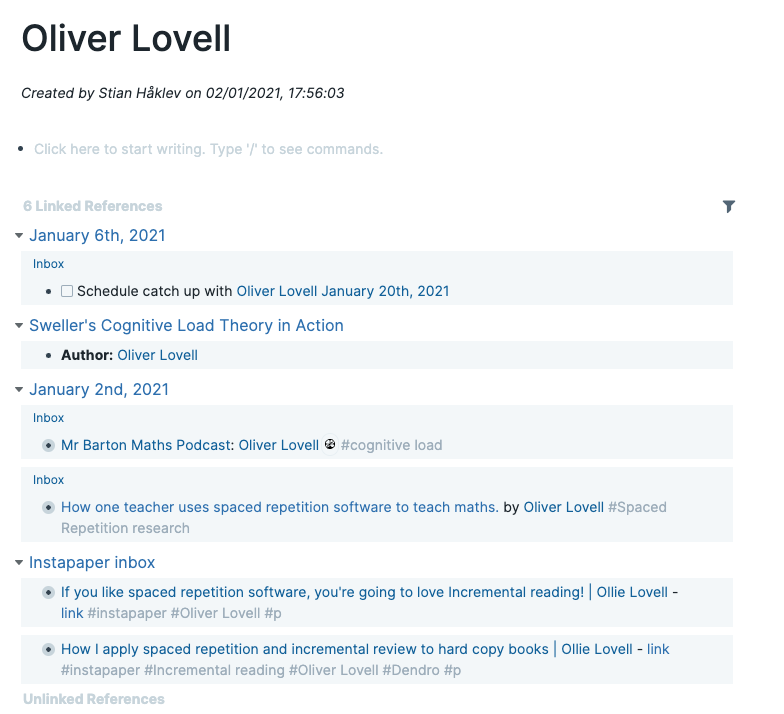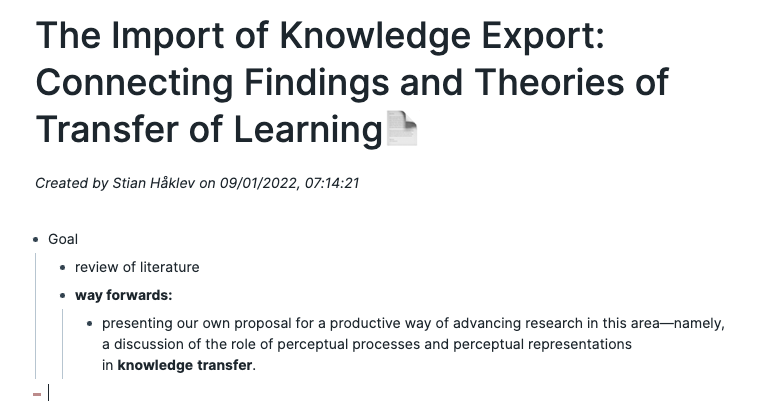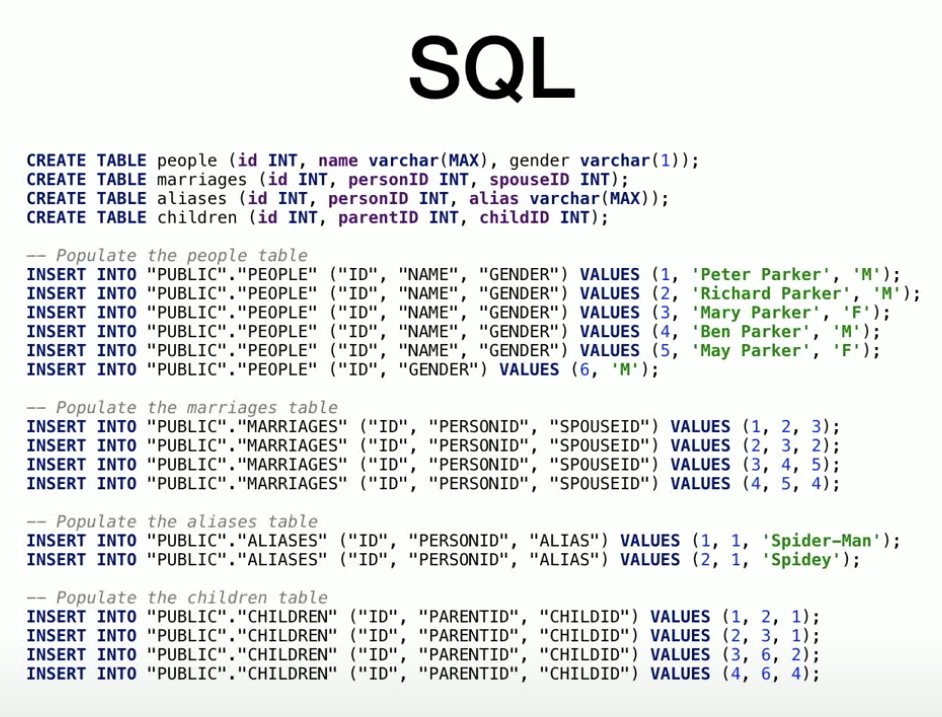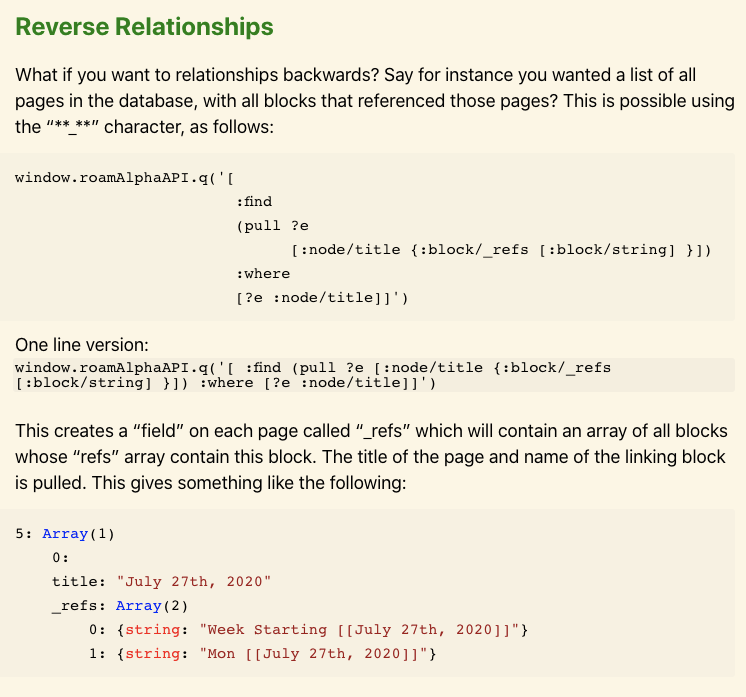
What am I getting myself into? Maybe it was a combo of @m_ashcroft's enthusiasm, and some interesting discussions on an Obsidian forum today... I still have a pretty high confidence level that Obsidian will never be my daily driver (but not 100%)... 

However, I'm really frustrated by Roam missing some essential features, and Logseq still having too many performance problems... So let's try something totally different :)
Also, there's an insane amount of cool plugins and good thinking in the Obsidian community,
Also, there's an insane amount of cool plugins and good thinking in the Obsidian community,
which becoming more familiar with Obsidian might help me learn more from. And I like the premise of the course, and the style - also going to be taking notes on pedagogy, onboarding etc.
@rroudt might want to get inspired for a self-guided course on Logseq.
@rroudt might want to get inspired for a self-guided course on Logseq.
I'll be adding observations to this thread. linkingyourthinking.com/obsidian-fligh… (@NickMilo is the creator).
First thought: The live preview is really good - seems even better than Roam/Logseq for many things (hiding Markdown in the block your editing but still easily editable)
First thought: The live preview is really good - seems even better than Roam/Logseq for many things (hiding Markdown in the block your editing but still easily editable)
Thought on the pedagogy - I love that there's lots of text to be read, interspersed with short videos. @cortexfutura I'd love to see much more writing in the future, courses that only consist of video are really exhausting. Also excellent interactive format - now edit this, etc.
Interesting to see different ways of formatting notes - putting note title on top as header, using headers to structure content - seems way less flexible than an outliner (oops, I made my sections h2, but now I need a category above). Seems clumsy to me...
Of course I know that you can use Obsidian more like Roam (outliner plugin etc), but also useful to learn the "native"/"idiomatic" way (even though I know there are many approaches). 

I will say - this course looks visually awesome. So pleasant to navigate/read. Never feel lost. A sense of calmness.
Many nice themes foe Roam, but even with document mode etc, don't think you could get to anything similar... For sharing/presentation etc, definitively ++.
Many nice themes foe Roam, but even with document mode etc, don't think you could get to anything similar... For sharing/presentation etc, definitively ++.
Tiny thing, but it's interesting that the open new page/create uses enter to select the top choice, but shift+enter to create a new page. This means both options are a keypress away, whereas with Roam, you have to arrow down and enter to select the existing page. Speed matters. 



The small keyboard legend at the bottom is also unobtrusive, but great for discovery - does everyone know that shift+enter in the Roam dialogue opens the page in the sidebar?
(What's better - dropdown or modal? Possibly Roam dropdown let's you keep more of the page visible).
(What's better - dropdown or modal? Possibly Roam dropdown let's you keep more of the page visible).
The toggle pin, which can be toggled with Shift+Cmd+E keeps the page you are on, and all links automatically open to the right. Tiny detail, but really neat. 

One thing I've wanted: to be able to select multiple pages from the autocomplete. Say I search Obsidian, and see 3 relevant hits - I'd like to be able to shift-click on all 3 of them to open.
(Of course I can do a search, rather than using Cmd+O, but if I'm already there...)
(Of course I can do a search, rather than using Cmd+O, but if I'm already there...)
Obsidian quick-switcher does partial matches, so nimil will match Nick Milo (I have a lot of Nick's!), whereas Roam throws up its hands. No nimil's here, go make one. :) 




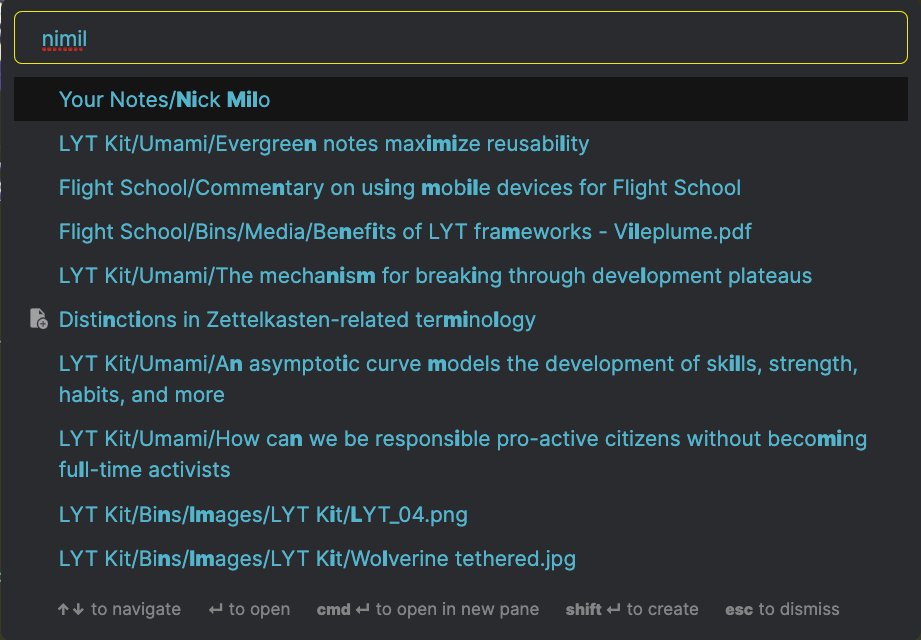
Although this doesn't work everywhere. If you have a tag called #on/pkm, typing #onpkm will not autocomplete. 

Talking about tags, one big difference with Roam is that Obsidian treats tags and pages totally differently. Writing [[peter]] creates a page called peter.md when clicked on (before created, link has different color). Whereas #peter only opens the tag panel...
In Roam I used these interchangeable - mostly to distinguish inside/outside text, like
- Met [[Peter]] to discuss his use of [[Logseq]] #meetings
- Need to plan my [[meetings]]
In this case, the two "meetings"s both refer to the same page, and generate the same kind of backlink.
- Met [[Peter]] to discuss his use of [[Logseq]] #meetings
- Need to plan my [[meetings]]
In this case, the two "meetings"s both refer to the same page, and generate the same kind of backlink.
• • •
Missing some Tweet in this thread? You can try to
force a refresh


